
10 minute read
IDEAL INDUSTRY SOLUTIONS
MEET OUR INDUSTRIAL SPECIALISTS
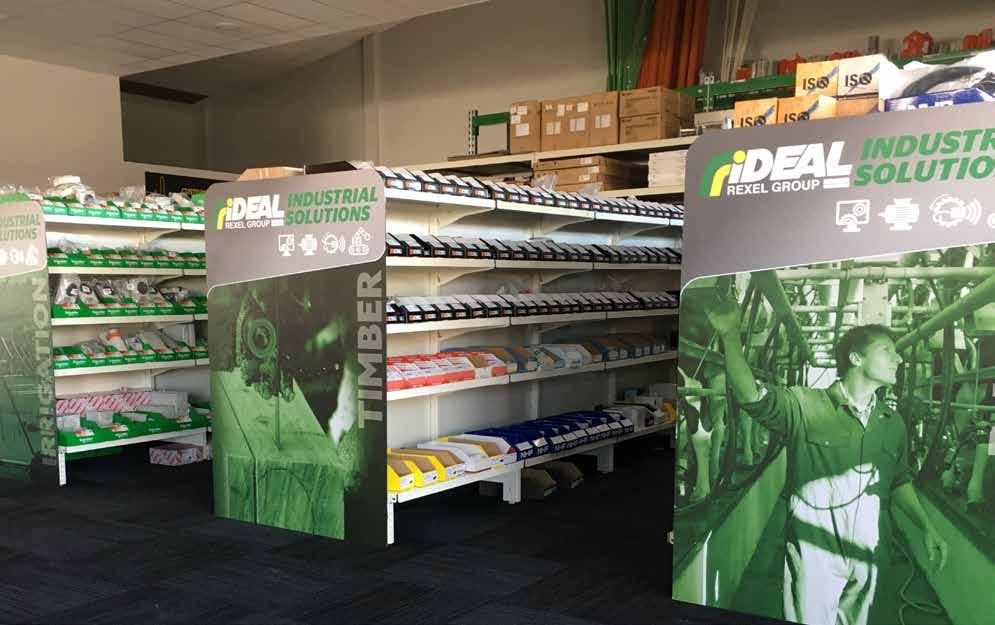

MATT NECKLEN
BDM INDUSTRIAL SPECIALIST - NORTH ISLAND
P. 021 409 497 E. matthew.necklen@ideal.co.nz O. Mt Maunganui
AARON WOOLLEY
BDM INDUSTRIAL SPECIALIST - NORTH ISLAND
P. 021 402 108 E. aaron.woolley@ideal.co.nz O. Wellington
PAUL BOOTH
BDM INDUSTRIAL SPECIALIST - SOUTH ISLAND
P. 021 197 2718 E. paul.booth@ideal.co.nz O. Dunedin
CARL WARD
BDM INDUSTRIAL SPECIALIST - SOUTH ISLAND
P. 027 243 1456 E. carl.ward@ideal.co.nz O. Sydenham
For more information on our range of Industrial products or our key partner suppliers, get in touch with one of our industrial specialists today.
Klippon® Connect – A-series
Faster wiring with push-in terminals
Weidmuller’s A-Series Push in Terminal range offers so much flexibility and functionality. Installation is up to 50 percent faster with the ‘push-in’ connection system. Even stranded wire conductors can be connected by simply pressing the pusher without the need for any special tools. The conductor is simply inserted into the contact point as far as the stop and that’s it – you have a safe, gas-tight connection. Simply pressing the pusher causes the contact to open and the conductor can be removed – and there’s no need for any special tools. Our springloaded mounting foot compensates for differences in terminal rail dimensions. This makes latching and unlatching the terminal blocks easier and speeds up any modifications or rewiring. The new marker strips ensure effective labeling. They can be created very quickly and attached as strips. Integrated cross-connection channels increase flexibility and shorten wiring times. All cross-connectors can be adapted and identified easily. A-Series Push in terminals have a standardised test point that will allow a standard 2 mm multimeter probe to be held captive for measurements that require the test leads to be left in place for a longer time. Dedicated test plugs are also available and can be stacked together to achieve any desired testing arrangement. Our PUSHIN design gives these terminals a gas tight connection with a very high level of shock and vibration resistance, enabling them to be used in the most arduous of applications. Let’s connect.
Features
• Standardized test point • Vibration-resistant, gas-tight connection with copper power rails and stainless-steel spring • Integrated pushers • Compensating mounting foot • Efficient markers • Integrated cross-connectors
push-in
Faster installation without compromise
Say yes to speed and improved integrity with Weidmüller A-Series push-in terminals.
Why A-Series terminals?
Faster installation time
Vibration and shock resistant
Modular configuration options reducing space required in cabinet

The electrical industry is being exposed to EV charging more frequently than ever before. When installing an EV charging station you will need to be able to test it and this testing requires some specialist equipment that most electricians may not have in their tool kits.
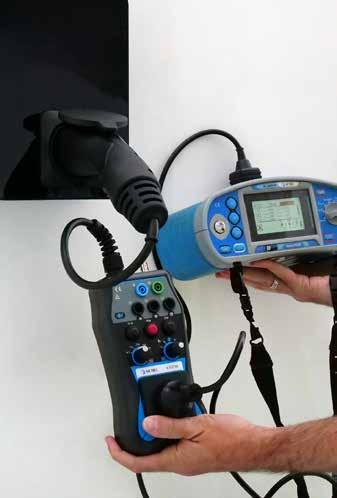
We’re going to be focusing on installation of AC charging infrastructure. Do not get confused – an AC charging station is not a charger at all. It’s actually a controlled safety switch that has a safety and communication circuit with the car. The power going to the car is in fact mains power, the onboard charger in the vehicle is where that power is changed from AC to DC.
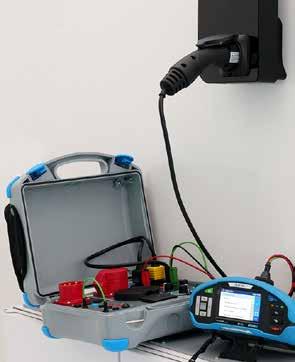
When installing an EV charging station there needs to be some protection against a pure DC leakage current. There are two different ways of achieving this. • Install a Type B RCD supplying the charging station. • Install a Type A RCD and a charging station that has internal 6mA leakage detection (a Residual Direct Current
Detection Device: RDC-DD)
SO WHAT NEEDS TESTING?
In addition to the normal testing that you would do for any new electrical installation there is some additional testing required.
DC LEAKAGE
Check the functionality of the Type B RCD or internal 6mA DC leakage detection. In order to do this you will need an RCD tester or installation tester that has both Type B and 6mA leakage settings (6mA leakage is sometimes referred to as Type EV) just be aware that these are two separate functions and you will need both as you do more EV charging station installations.
CHARGING STATION FUNCTIONALITY
To do this, you will need a test adaptor that simulates a car being plugged in. The test adaptor will be able to simulate: • Control Pilot • Proximity Pilot (for untethered charging stations) • Error – Control Pilot signal open circuit • Error – Diode short circuit • Error – control pilot short circuit The adaptor should also have a BNC connector so that a scope can be connected and used to check the functionality of the proximity when testing an untethered charging station. The scope needs to be suitable for testing a 1kHz signal.
RCCBS AND RCBOS:
These are both RCDs • An RCBO is an RCD with integrated overcurrent protection. • An RCCB is an RCD without integrated overcorrect protection. The easiest way to tell these apart is the rating on the front. • If it has a rating such as 40A then it is an
RCCB (no over current protection) rated at 40 amps.
• If it has a rating such as D40, then this is an RCBO that is rated for 40amps with a
D curve tripping profile. Do not confuse a B curve with a Type B. The ‘curve’ relates to the overcurrent protection and the ‘Type’ relates to the different types of leakage current that the RCD will work with.
In order to perform accurate testing of EV charging infrastructure, you’ll need an installation tester with both the Type B and the 6mA leakage settings (sometimes referred to as Type EV). These are very specific functions and are not found on all installation testers.
EUROTESTEASI MULTIFUNCTIONAL INSTALLATION TESTER
EVSE TESTING ACCESSORIES IN HARD SHELL CASE
MI3100BSE MI3100BSE EurotestEASI is a fast, accurate and easy to use multifunctional measuring instrument which performs a complete set of installation safety tests. All the results can be quickly saved then downloaded via the EuroLink PRO software (included) for evaluation and report generation after testing.
MEASURING FUNCTIONS • Insulation resistance • Continuity • Line impedance & Loop impedance • Loop impedance with Trip Lock RCD function • TRMS voltage & frequency • Phase sequence • RCD testing - type AC, A, F, B, B+, MI RCD, EV RCD • Earth resistance (3-wire method) • On-line voltage monitoring of all 3 voltages in real-time • Built-in fuse tables for automatic evaluation of the line/loop impedance result • Built-in charger unit has a built-in charging circuit and includes a set of rechargeable NiMH batteries
EVC-TESTING-KIT-XA The TransNet EVC-TESTING-KIT-XA includes all the accessories you need to connect your MI3100BSE multifunctional installation tester to an EVSE to complete testing on it. The main component of the kit is the A1532-XA-T2 EVSE adapter which is used for verification of electrical safety and functional testing of EVSE. It is intended for testing Mode 3 EV supply equipment with a type 2 connector. The XA version supports 3ph load testing up to 13A and different error types, including PE open. All components in this kitset have been chosen for their accuracy, quality and compatibility.
KITSET CONTENTS • A1532-XA-T2 – EVSE adaptor • EVC-TESTING-ADAPTOR – Type 1 to Type 2 adaptor used for testing purposes only • TNTT-EVSE – Test tags specific to testing of EVSE • EVC-BAG – Hard shell storage & carry case for test kit contents
IDEAL CODE DESCRIPTION
MELMI3100BSE Metrel EurotestEASI Multifunction Tester

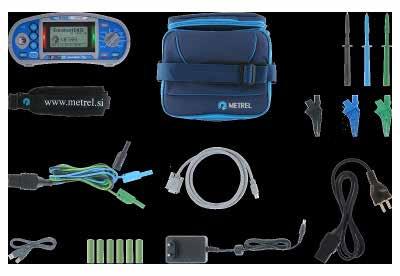



POWERING

THE FUTURE
Temporary power distribution throughout a worksite has remained the same for some time. Little attention has been given to improving performance, safety, reliability, or user-friendliness – until now.
Auckland based company Sitemate Power Systems has now launched a new range of products that they say, sets the benchmark for portable power solutions.
“We started from scratch and made sure that the people who use this equipment every day were involved in the process to introduce advantages and features that have been asked for in this category for decades,” says Bruce Bailey, Sitemate’s Product Development Manager.
Sitemate drew on feedback and expertise from people in the construction, demolition, civil, events and electrical industries as well as from ports, mills and mines.
The result is a comprehensive, versatile and scalable temporary power solution that includes portable main distribution switchboards, temporary power boxes, portable supply outlet assemblies, LED chain lighting and a large range of accessories - all connected by industry-leading heavy-duty power leads available in lengths of 10, 15, 20 and 30 metres and either 32 Amp or 63 Amp with a copper braided screen ensuring maximum safety and resilience.
CAREFULLY CRAFTED
“We knew this equipment would be used in some very tough environments. The construction needed to be super-rugged but still simple to use, move and store,” says Sitemate Business Development Manager, Richard Collins.

The power boxes range from 10 to 250 Amps and are crafted from robust, impact resistant specially bonded polyethylene that is perfectly suited to New Zealand worksite conditions being UV treated and IP65 rated. All units are equipped with RCDs for added safety. The outlet configurations cater for the most common applications in events, all building sites and large construction sites.
“With these boxes, stackable actually means stackable and outlet maintenance or swapouts can also be performed hassle-free from the exterior of the box,” says Collins.
Other notable design features include the recessed aspect of the outlets to reduce the chance of damage through collision, multiple carry points and stable, anchorable feet that minimise the risk of toppling and provide great ground clearance to avoid surface water or spills.
SCALABLE AND VERSATILE
Sitemate’s temporary power solution can be inter-connected to suit any worksite, from the easily deployed portable main distribution switchboard, through to the smaller 32 Amp power boxes or strings of LED chain lights available in 25 metre, 10 lights per chain providing a maximum output of 200W per chain.
“We believe the robust construction, the zinc-coated protective cage along with the heavy-duty flexible cable makes our LED site lighting offer the most rugged on the market,” says Collins.
This new temporary power solution from Sitemate is completed by well-chosen and designed accessories with 2,3 and 5-channel, interlocking cable protector ramps and an assortment of lead hooks, brackets and stands reducing trip hazards or risk to leads.
For further information, visit www.sitematepower.co.nz Available to order through your local Ideal Electrical branch.
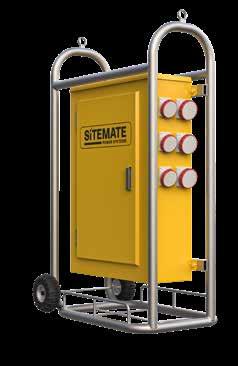



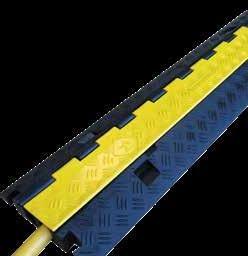


SAFE, STRONG, RELIABLE, TEMPORARY PORTABLE POWER
Sitemate Power Systems provides temporary portable power distribution solutions for construction, heavy industry and events.
Whether it’s on a construction site, a smaller building site or at an event of any size, getting power to where it’s needed is crucial.
To do this safely, quickly and reliably you need power distribution you can trust. Sitemate temporary power distribution will provide you with a solution you can rely on.
SPECIAL INTRODUCTORY OFFER
Spend $600-$1499 and get a FREE 14L Icebox Spend over $1500 and get a FREE 40L Icebox

Limited to 2 per account during the promotion period. 6th April to 31st May 2021. Designed for an easy carry in mind with multiple carry points. Impact resistant robust enclosure for outdoor use. Excellent ground clearance to avoid surface water. Bolt down anchoring points for added security on site. Stable footprint to minimise risk of toppling. Provision to add additional sockets or swap out existing sockets easily to suit site requirements. Recessed design providing increased weather protection and to minimise risk of damage to outlets. Stackable for storage and transportation. 2 Year Limited Warranty. New Zealand Designed. Our equipment meets the new standard AS/NZS 61439.4 which comes into effect May 2021.





